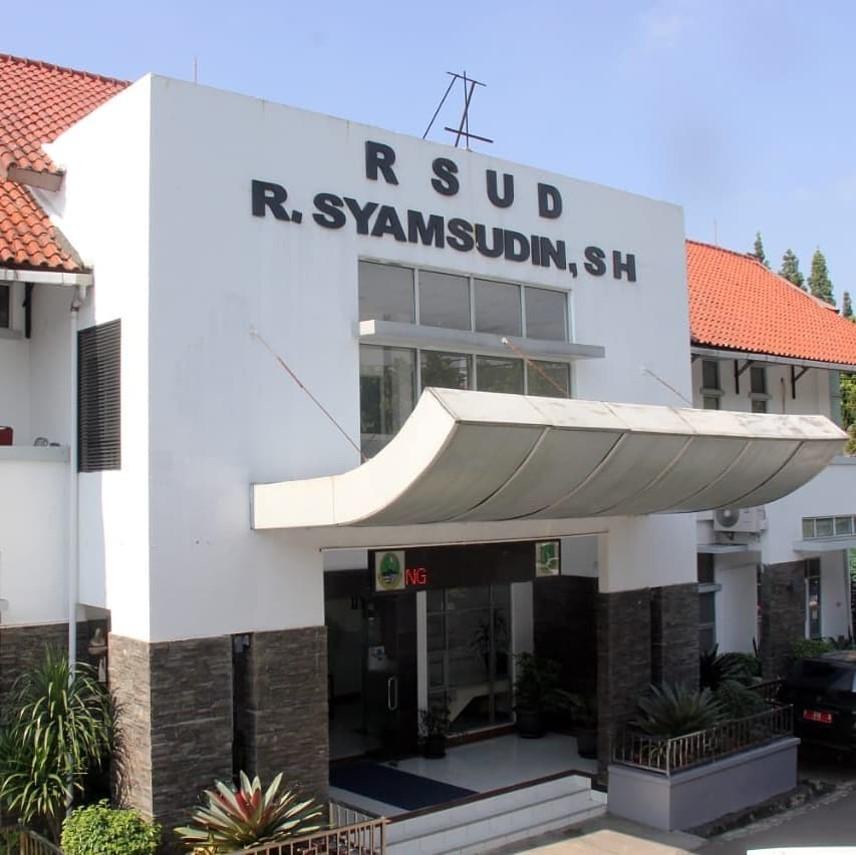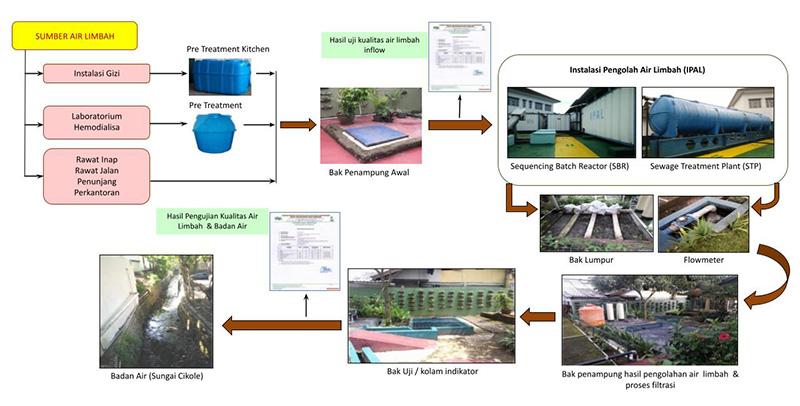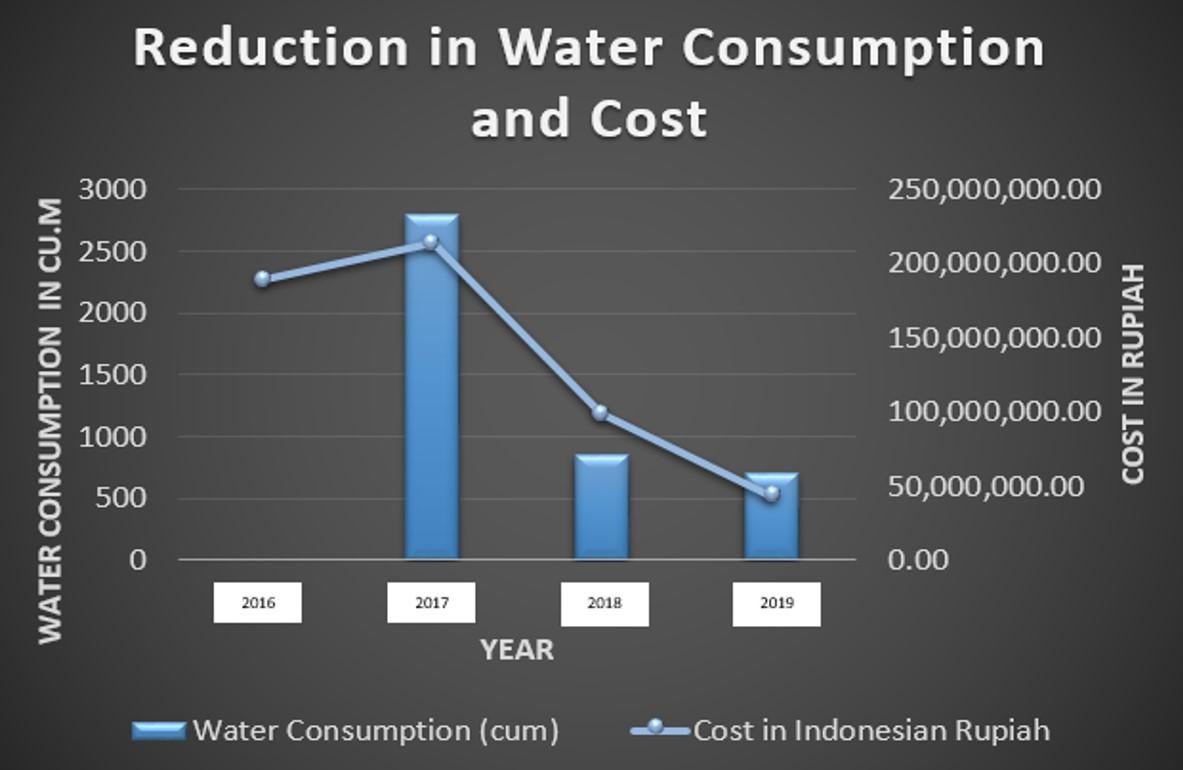Location: Sukabumi, Indonesia.
Work area: Products, Process.
Summary: Water resource conservation and reuse. The acquisition and installation of a Wastewater Treatment Facility reduces the use of fresh water by at least 70%.
Initial situation
Water use in hospitals and health care institutions makes up a substantial percentage of all water used (for example in the United States, water used in hospitals and other health care facilities accounts for 7% of the total water use in commercial and institutional facilities.)
Cooling equipment, plumbing fixtures, landscaping, and medical process rinses are among the largest consumers of water in hospitals. Syamsudin Hospital, Indonesia, like other hospitals, has seen water use rise significantly.
In 2016, Syamsudin Hospital’s cost of water was 188,941,300.00 rupiahs (almost USD$ 14,000), which increased to 213,620,800.00 rupiahs in 2017 (over USD$ 15,500). Absent efforts to save water and put in place measures to treat and recover waste water, water-related expenses in Syamsudin Hospital would be higher year on year.
Proposed alternatives
The hospital invested in a water treatment facility that captured waste water from the laboratory and hemodialysis centers.
The Water Treatment Facility was built to take in the used water and process it. The used water undergoes different procedures including pre-treatment prior to being subjected to sequence batch reactors (SBR). From the SBR, the water is aerated and filtered before reaching the test pools. In the test pool, several indicators are measured against the actual output of treated water.
Treated water was used for non-critical hospital water needs such toilets, cleaning hospital grounds, backwashing and watering plants. Previously, fresh water from metered taps was used for this purpose.
Progress and benefits
The installation of the water treatment facility has been beneficial to the hospital for the following reasons:
- Reduction in expenditures for needed water supply. From 2017 to 2019, a 75% reduction was realized over the 2 year period.
- Reduction of at least 75% in the use of freshwater. Since treated water is used for non-critical water needs of the hospital, this initiative helps save 4,026 cubic meters of freshwater.
- Optimized use of freshwater. Maintained level of used freshwater despite the increasing number of patients and employees.
- Installation of the water treatment facility within the hospital.
Decline in water usage:
- 2017: 2,788 cu. m
- 2018: 850 cu. m
- 2019: 700 cu. m
Implementation process
The hospital employed several procedures to efficiently and effectively achieve water conservation and reduction:
- The hospital procured and installed a water treatment facility that will facilitate treatment and recycling of utilized water from laboratory and dialysis departments.
- Increased visibility of signage and reminders which promote conscientious water utilization.
- Continuous monitoring of utilized freshwater and treated water.
Next steps
Syamsudin Hospital will continue to review and monitor implementation and operation of the water treatment facility. The hospital will continue to streamline its activities and operations including the human resources who are involved in the process of operating the water treatment facility.
Information about the organization
The Regional General Hospital R. Syamsudin was established in the city of Sukabumi, West Java at the beginning of September, 1920. The hospital was formerly called the St. Hospital Lidwana (Bunut). Following efforts to provide social services to the community, the name was changed and established by the Municipal Government of Sukabumi. Currently, the hospital has an 800 bed-capacity.


